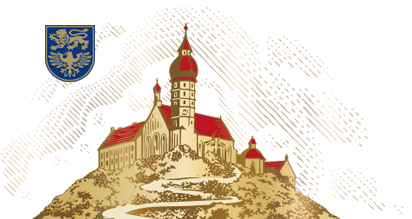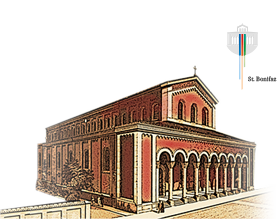Relics
Relics are venerated remnants of the body of a saint or objects related to them. Relics of Christ as those relics associated with Jesus Christ.
Early veneration
Outside of settlement areas, early veneration unfolded around the graves of martyrs and saints. Churches have been dedicated to the most important martyrs since the time of Emperor Constantine in the 4th century. Many were constructed over the graves of saints. Another way is to transfer the mortal remains of saints into a church. The connection to the altar has been formed this way since the Middle Ages. Relics now need to be enclosed in every altar.
Testimonies of faith
A second dimension has been ascribed to the relics since the days of Late Antiquity: healing, protective or harm prevention properties. Not just burial in the vicinity of relics but also their possession is therefore desirable. Sovereigns, bishops and abbots amassed large collections of relics. This inflationary development was sharply criticised repeatedly during the Reformation. However, awareness that living with all the senses is only human allows one to find a connection with relics even today. The historic authenticity of relics is not nearly as important as the place of relics as testimonials of faith and visible symbols of the grace of God.
History of the collection of relics
The beginnings of the collection of relics go back to the 10th century. They are closely entwined with the line of the Counts of Andechs. Count Rasso, forefather of the Andechs-Meranians, is said to have brought the first Relics of Christ back from a pilgrimage to the Holy Land. They became the basis for the Andechs collection of relics: a branch of the Crown of Thorns, a fragment of Christ’s reed sceptre and a piece of His cross. The relics also include precious textiles such as the “stole” of Saint John the Evangelist and the “belt” of Maria Magdalena. The “golden rose” of monastery founder Duke Albrecht III and the “victory cross” of Charlemagne are venerated as relics as well. Relics of Saint Nicholas and Saint Elisabeth of Thuringia, patron of the Pilgrimage Church, are venerated in Andechs as well.
The “three Sacred Hosts”
The “three Sacred Hosts” are the core of the Andechs relics. Two hosts are said to originate from Pope Gregory the Great (6th century), respectively depicting a blood-coloured cross and phalanx. The third with the monogram of Jesus in blood is said to come from Pope Leo IX (11th century).
Changeful times
The Andechs collection of relics was expanded and also changed over the centuries. In 1715 the “holy relics” were comprised of 277 items. Only 40 pieces remained in Andechs after secularisation in 1803. A sliver of the skull of Saint Hedwig of Silesia cam to Andechs in 1924 as a gift from Cardinal Bertram von Breslau. The bones of Saint Pauline and Saint Serena rest in the glass shrine on the upper high altar and in the Chapel of the Cross. Part of the collection of relics was exhibited at the Bavarian National Museum in Munich in 1967.
Andechs relics outside of Andechs
Former Andechs relics are also found outside the Pilgrimage Church. The “Forstenrieder Kreuz”, a Romanic crucifix kept in the parish church of Forstenried today, is a reminder of the Counts of Andechs. Parts of the Andechs relics are also found in the treasure and relics chamber of the Munich residence.
The collection of relics today
Today the collection of relics is kept in the “Holy Chapel” and presented to small groups in the course of scheduled church tours.










